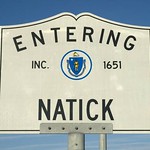King in Norway's Fairhair dynasty / TUE 5-13-25 / Bone-in cut whose name became an endearment / Bright yellow creature that moves about 6.5 inches per minute / "Two pools of light, a mirror bright," in generative A.I. poetry / Co. behind the "Book Review" podcast / "Superberry" of South America
Tuesday, May 13, 2025
Constructor: Joe Rodini
Relative difficulty: Easy
THEME: FOOD FIGHT (38A: Cafeteria shout that might provoke the moves at 17-, 26-, 54- and 64-Across) — phrases that are [food] + [synonym for "hit, as in a fight"]
Theme answers:
- FRUIT PUNCH (17A: Ladled party drink)
- CORNBELT (26A: The Midwest states, agriculturally speaking)
- LAMBCHOP (54A: Bone-in cut whose name became an endearment)
- BANANA SLUG (64A: Bright yellow creature that moves about 6.5 inches per minute)
The Fairhair dynasty (Norwegian: Hårfagreætta) was a family of kings founded by Harald I of Norway (commonly known as "Harald Fairhair", Haraldr inn hárfagri) which united and ruled Norway with few interruptions from the latter half of the 9th century. In the traditional view, this lasted until 1387, however, some modern scholars view this rule as lasting only three generations, ending with Harald Greycloak in the late 10th century. The moniker "Fairhair dynasty" is a retrospective construction: in their lifetime what little traces there are refer to them consistently as "Ynglings". // The Fairhair Dynasty is traditionally regarded as the first royal dynasty of the united kingdom of Norway. It was founded by Harald I of Norway, known as Haraldr hinn hárfagri (Harald Fairhair or Finehair), the first King of Norway (as opposed to "in Norway"), who defeated the last resisting petty kings at the Battle of Hafrsfjord in 872. [...] It is undisputed that later kings, until Magnus IV (Magnus the Blind, r. 1130–1135 and 1137–1139), were descended from Harald Hardrada: the 'Hardrada dynasty'. However, some modern historians doubt whether Harald III or his predecessors Olaf Tryggvason, Olaf II and Magnus the Good were in fact descended from Harald Fairhair [...] Scholars now consider the Fairhair dynasty at least partly the product of medieval invention. (wikipedia)
From a purely aesthetic standpoint, I like the SE corner best. Something about a NUCLEAR HYDRA excites me, as does the vivid RED CLAY of Roland-Garros (46D: Court surface at the French Open), and the rollicking verb CAROUSE (47D: Go on a pub crawl, say). Got a little worried about that last answer at first, wondering why you would be using your CAR- to get around during a pub crawl—seems like a very bad idea. But then, it turns out, no cars involved. All pub-crawl CAROUSE-ing done, appropriately (and safely), on foot. Still loving NUCLEAR HYDRA. Sounds like a perfect cheesy band name, or a very advanced D&D monster. Not a lot of good that broadswords, halberds and slingshots are gonna do against a NUCLEAR HYDRA, I'm afraid. Run away!
Bullets:
- 72A: "Two pools of light, a mirror bright," in generative A.I. poetry (EYES) — not sure what this clue thinks it's doing. Why is it "generative A.I. poetry"? Because it's corny? This is an oddly cavalier and ignorant clue. Like, A.I. sucks in so many ways, but it can do poetry better than this. This is more like how any hack poet might've written at any time in human history. Since A.I. steals from all poetry that's ever been written, it has a remarkable ability to produce verse that, while soulless, is far more sophisticated than this cliché tripe. I just don't think "in generative A.I. poetry" is a coherent thing. It doesn't work as a descriptor. There is no coherent world of "A.I. poetry"; we do not all understand the same thing when we see this phrase. I guess the puzzle is trying to sound "modern," but they're doing a pretty bad job of it. I thought the idea was going to be that A.I. makes a lot of dumb errors (which it absolutely does—if you've had more than a passing experience with Google's horrific "A.I. Overview," you know this). So my first answer here was AYES. I was trying to make the "in generative A.I. poetry" make any kind of sense. Silly me.
- 34A: Blanket draping a mountain at dawn (MIST) — turns out my brain has an order of operations when it comes to things blanketing mountains. First is SNOW. Then DEW (the "dawn" really wants DEW). Then ... nothing, really. I had to piece together MIST from crosses. "A blanket of MIST"—yeah, I can hear that. But it didn't come to me easily while solving (one of the few answers that didn't).
- 64A: Bright yellow creature that moves about 6.5 inches per minute (BANANA SLUG) — interesting move, not using UC Santa Cruz in the clue. I figure that's how most people know the BANANA SLUG exists at all (it's their mascot). My stepbrother went there, as did a couple of people I went to graduate school with. It was the very first school I got into, and even though I didn't particularly want to go there (if only because my stepbrother had already gone there), I do remember feeling an overwhelming sense of relief that some college, any college, had accepted me. The university reached peak pop culture fame when Vincent wore a UC Santa Cruz BANANA SLUGs t-shirt in Pulp Fiction (it was an emergency clothing situation—he and Jules got blood and brains and stuff all over their nice suits).
 |
| [I own the shirt on the right—a scene from George Herriman's "Krazy Kat" (Ignatz hitting Krazy with a brick as Offissa Pupp looks on)] |
[Follow Rex Parker on BlueSky and Facebook]
.png)



















